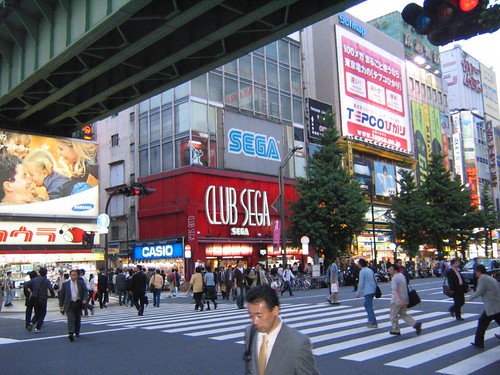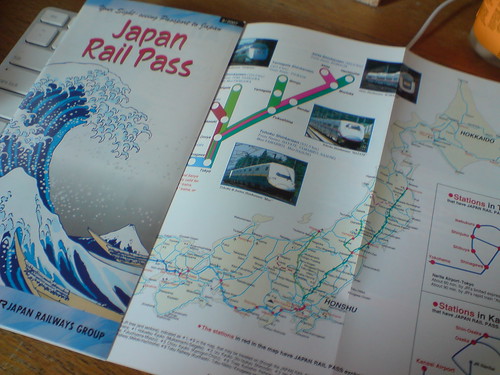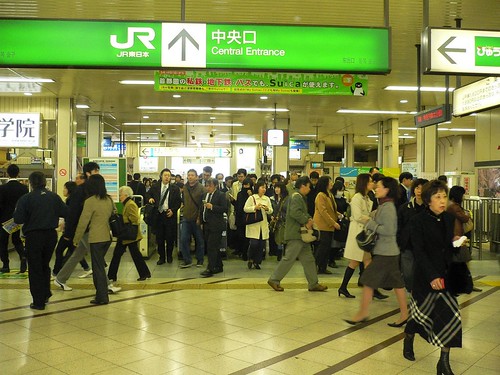Unlike expensive than movies about Japan that are determined to show the cultural leap is not as dramatic. Besides being extremely nice, is not so difficult to communicate with the Japanese. But above all we must ask a question What is our holiday destination in Japan? The first thing to know when planning a trip to Japan is to know that this destination is not exactly a cheap destination. That does not mean not going to cost an arm and a leg, but should be careful when planning our visit, to avoid the cost to skyrocket.

Photography by Alo Lopez
As always, anticipating the purchase of the flight as possible helps to reduce costs. Iberia (stopover in London), Etihad Airlines (Abu Dhabi scale) or Klm (scale in Amsterdam) are among the companies that connect Madrid and Tokyo. But the choices are vast.
Visa:
You should know that you do not need visas. One of the best news in planning a vacation is that the Spanish who travel for a maximum period of 90 days does not require a visa. This is provided that the purpose of travel is tourism, family visit or business conference.
Foreign residents in Spain must obtain a visa at a Japanese embassy or consulate, as explained in the website of the Embassy of Japan in Spain.
How to beat jet lag and other recommendations:
There is no magic cure against jet lag and even less so when the time difference is so great. The time zone is GMT 9 Japan, while that of mainland Spain is GMT 1 GMT Standard Time and DST 2. That is, there are seven hours apart in summer and eight the rest of the year.
The recommendations against jet lag are obvious: try to sleep during long flights and on arrival and, drink plenty of water and wear sunglasses to try to fool the clock.
As for vaccinations, the Japanese Embassy in Spain said that foreign travelers need no vaccination certificate, whichever country they come. And in the health aspect, the Spanish Foreign Ministry described the conditions of «optimal», but clarifies that cases of poisoning can occur by ingestion of raw foods, especially in summer. For short, it provided a travel insurance.
At this point, it is clear that the variety of cuisine in Japan is very extensive and is not necessary to resort to international fast food chains for those who dislike raw fish. O-kome (rice), Mame (alluvium), miso (soup), tofu, shoyu (soy sauce), soba (noodles), tempura, yakitori and shabu-shabu (the latter two ways of cooking the meat) attached to the famous Kobe beef are just a few examples of all the alternatives to sashimi and sushi.
Transportation in Japan:
Another cost-saving measures when planning the trip to the Empire of the Rising Sun is being cautious with the planning of the roadmap. The best way to get around Japan is its advanced railway network, but depending on if we only visit Tokyo, Kyoto incorporate our way or move freely throughout the country, you have to choose either option.

Photography by kalleboo
Many travelers who visit Tokyo and Kyoto and most moving across the country, betting bonus for purchasing the railway Japan Rail Pass 7 days. It costs 28 300 yen (about 260 euros, but should review the current exchange rate) is a kind of Interrail and you have to hire from outside of Japan (All information about where to buy this on the website of Japan Rail Pass).
The Japan Rail Pass has many advantages but also some disadvantages. It is advisable to estimate, with the help of a travel guide, which can cost as journeys but, when you decide, enough to know that this bond is very similar to the cost of return journeys on the high speed between Tokyo and Kyoto.
What can be more confusing than in Japan there are many private railway companies and not all trains or all routes to the system benefiting Japan Rail Pass, but most do. Moreover, the famous shinkansen «bullet trains», except the highest class model, are included on the voucher.
To move around Tokyo, you can use the Japan Rail Pass in many lines or acquire urban metro bonus day for 710 yen (about 6.5 euros).

Photography by Retinafunk
Zone of frequent earthquakes?
The Spanish Foreign Ministry is quite clear about Japan’s seismic activity: earthquakes common area, most of which are not noticeable. The Japanese are very used to the small earthquakes that are actually quite common, making their buildings are well prepared for it.
The traveler should not worry excessively about earthquakes. By the way, is good to have located the emergency exits of hotels and local attention in the event of natural disaster, the radio and television stations of NHK (delivers information in English).
As best time to travel to Japan, Foreign recalls that «from mid-August and mid September typhoons torrential rains and strong winds that usually do not alter the normal functioning of large cities.»
The summer is as hot as in Spain so the best times to visit the Empire of the Rising Sun are from March to May and September to November.
Have you been to Japan? Send us your recommendation
Leave a Reply
You must be logged in to post a comment.
Recent Comments